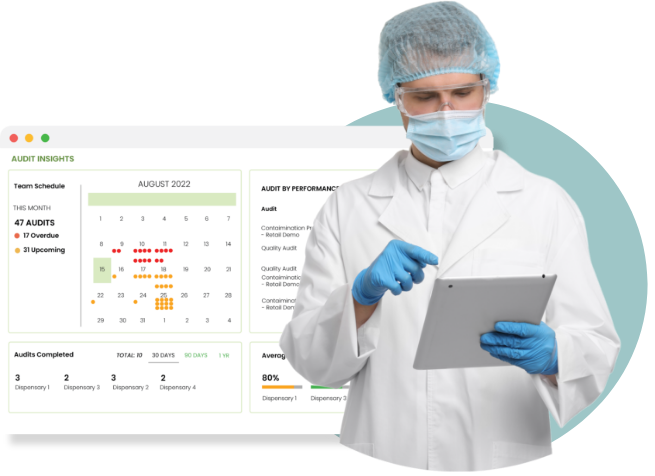Author: Ben Hartman | July 3, 2024 | 4 Min Read
FDA Publishes New Resources to Help Companies Meet Traceability Requirements

In late June, the U.S. Food and Drug Administration published a series of additional resources to help the food industry comply with the Food Traceability Final Rule before the guidelines go into effect in January 2026.
These resources include a downloadable, electronic sortable spreadsheet template, a supply chain example for sprouts, a chart summarizing exemptions for produce farms, and minor revisions to the FDA’s Food Traceability List that clarify the status of previously frozen foods on the list and a new FAQ summarizing the changes.
The FDA is also continuing to work with the Food Safety Preventive Controls Alliances (FSPCA) to develop traceability rule training for the food industry. According to Food Safety Magazine, this training is expected to be available for the food industry by mid-2025.
Are you ready for January 2026?
Under FDA guidelines, by January 2026 every food company operating in the U.S. that manufactures or holds foods on the FDA’s Food Traceability List must implement the recordkeeping requirements detailed in Section 204D of the FDA Food Safety Modernization Act (FSMA).
These guidelines require that companies maintain records that contain Key Data Elements associated with specific Critical Tracking Events (CTEs). Companies must also be able to provide information on a spreadsheet to the FDA within 24 hours if requested.
Companies are not required to use a specific application or technology for recordkeeping, but in the event of a threat to public health, companies may be requested to provide information on an electronic sortable spreadsheet.
The food traceability list covers a wide range of foods, including certain cheese products, shell eggs, nut butters, crustaceans, molluscan shellfish, bivalves, ready-to-eat deli salads, fresh-cut leafy greens, finfish (fresh, frozen, and smoked), and fresh cucumbers, herbs, leafy greens, melons, peppers, sprouts, tomatoes, tropical tree fruits, and vegetables.
Why Does Traceability Matter?
According to the FDA, traceability is “the ability to follow the movement of a food product and its ingredients through all steps in the [food] supply chain, both backward and forward. Traceability involves documenting and linking the production, processing, and distribution chain of food products and ingredients.”
When products are traceable in an efficient, detailed way, it makes it much easier in the case of a foodborne illness outbreak “to rapidly find the source of the product and where contamination may have occurred. This enables faster removal of the affected product from the marketplace, reducing incidences of foodborne illnesses,” according to the FDA.
The consequences of not being able to trace contaminated products can be grave. According to Centers for Disease Control estimates, every year 48 million people in the United States become ill from foodborne disease, 3,000 die, and 128,000 are hospitalized.
“Food Companies Aren’t Ready for Section 204D”
In an interview in April, Former Deputy Commissioner for Food Policy at the FDA Frank Yiannas expressed serious doubt that food companies will be ready to adopt the 204D guidelines.
“I don’t think we’re more than a third of our way there in terms of a food system being ready to comply,” Yiannas said.
Yiannas said that steps taken over the past two decades to improve traceability did not go far enough to reduce the risk of foodborne illness.
Yiannas said that when there have been foodborne illness outbreaks the food industry has seen “a lot of finger-pointing” about who was to blame. He added that he believes that the part of the supply chain that distribution centers are the most in need of improvement.
“The biggest friction point in compliance with the rules is that last mile of what distributors and retailers have to capture,” Yiannas said.
In a Rootwurks webinar held in April, Joel Chappelle, Attorney, and Consultant at Food Industry Counsel LLC discussed some of the most important steps food industry companies can take to improve traceability, including better collaboration throughout the supply chain.
“Collaboration is exceedingly important because you don't need traceability from the time you receive it to the time you ship it. You need it [traceability] and this needs to be an unbroken chain ideally from consumers all the way back to what the original source of that ingredient was,” Chappelle said.
To hear more about traceability, you can watch the webinar on-demand here.
Contributors

Ben Hartman
From HACCP certification to the basics of hygiene, our on-demand courseware has you covered.


-1.jpg?width=1200&height=628&name=Linkedin%20(20)-1.jpg)



.jpg?width=120&height=80&name=Baby%20(1).jpg)

